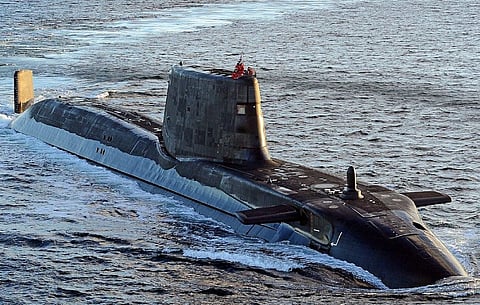

During the announcement of the formation of the AUKUS trilateral security partnership between Australia, the UK and the USA, it was mentioned that one of the first projects will be the UK and USA helping Australia to acquire nuclear powered attack submarines. Although not yet announced, at the time of writing, this is certain to mean the cancellation of Australia's contract with French construction firm Naval Group for 12 of its conventionally powered Attack-class submarines that were ordered in 2016.
The agreement doesn't specify which submarine will be purchased, off-the-shelf or new design, but does say that there will be an 18-month study period to determine needs, requirements, and the pathway to construction and operation. Given that Australia's present fleet of Collins-class submarines will need replacing circa 2030, it is unlikely that a new design will be suitable considering that it will be early 2023 before the study period is completed. Australia has never operated nuclear-powered vessels before but considering that Australia already operates exchange programs between its military and those of the British and American armed forces, it would make sense for Royal Australian Navy personnel to commence exchanges aboard UK and US nuclear-powered submarines at the earliest possible time. In addition to gaining valuable experience operating nuclear-powered craft, these exchange personnel would also gain familiarity with the most likely candidates for purchase.
The UK and the USA each operate fleets of indigenously designed nuclear-powered attack submarines; the Astute-class in the UK and the Virginia-class in the USA. The Astute-class is the smaller of the two classes with an overall length of 97 metres and a submerged displacement of 7,800 tonnes. The Virginia-class has evolved over the 20 years since construction commenced on the very first boat in the fleet with the different Blocks ranging in length from 115 (Block I) to 140 metres (Block V) and submerged displacements from 7,900 to 10,200 tonnes.
A total of seven Astute-class submarines are planned with the final two currently under construction whilst the Virginia-class fleet is expected to grow to 66 from the 19 currently in operation.
The British design is the newer of the two, having been completed in the mid-to-late nineties with the first hull laid down in 2001 whereas the American design is an evolution of the eighties-designed Seawolf-class. The British design will suffer as a candidate from being a smaller production run with no further vessels planned and the current ones likely to be completed before Australia commences construction on its own boats.
The US design has had the benefit of being able to evolve and also took advantage of significant cost-reduction processes that were developed during the budget sequestrations of the Obama-years. A large fleet means that the construction techniques for the US design are well understood and should be transferable to Adelaide where the Australian submarines are expected to be constructed. The larger Block V model is probably going to be considered too large for Australia's needs. However, a Block IV with the latest electronics could be suitable. A hybrid design of US and UK technologies is unlikely considering the timeline.
